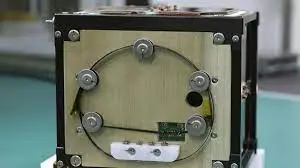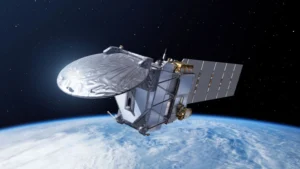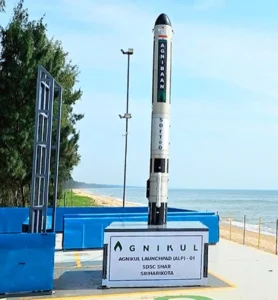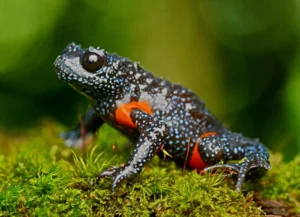UPSC GS 1
Sharavathi River
- News: The National Green Tribunal (NGT) has ordered the State Environment Impact Assessment Authority to stop illegal sand mining in the Sharavathi river coastal zone.
- Sharavathi River:
- Flow Direction: West, draining into the Arabian Sea.
- Origin: Ambutirthha in the Western Ghats, Shimoga district, Karnataka.
- Notable Waterfall: Jog Falls, one of the highest plunge waterfalls.
- Tributaries: Haridravathi, Yennehole, Nagodi, and others.
- Hydroelectric Power: The Mahatma Gandhi Hydroelectric Power Station is built on the Sharavathi River.
UPSC GS 2
Dag Hammarskjold Medal
- News: Naik Dhananjay Kumar Singh, who served with the UN Stabilisation Mission in the Democratic Republic of Congo, will be honoured posthumously.
- Establishment: The Dag Hammarskjöld Medal was established in 1997 and is the highest honour awarded to UN peacekeepers.
- Nature of the Award: This prestigious posthumous award is given by the United Nations to military personnel, police, or civilians who lose their lives while serving in a UN peacekeeping operation.
- Presentation: The medal is presented annually on the International Day of UN Peacekeepers, which is observed on May 29th. The award ceremony takes place at the UN headquarters.
- Naming: The medal is named after Dag Hammarskjöld, the second Secretary-General of the UN, who died in a plane crash while on a peacekeeping mission in 1961.
- India and UN Peacekeeping:
-
- India is the second largest contributor of uniformed personnel to UN Peacekeeping.
- It currently deploys more than 6,000 military and police personnel to the UN operations in Abyei, the Central African Republic, Cyprus, the Democratic Republic of the Congo, Lebanon, the Middle East, Somalia, South Sudan, and Western Sahar.
-
EMigrate Project
- News: A Memorandum of Understanding (MoU) has been established between the Ministry of External Affairs (MEA), Ministry of Electronics and Information Technology (MeitY), and Common Services Centers eGovernance Services India Limited.
- Memorandum of Understanding (MoU) Overview:
- Purpose: The MoU aims to extend eMigrate services through Common Services Centres (CSCs) across India, aligning efforts to safeguard Indian citizens seeking employment abroad.
- Objective: With a focus on protecting citizens from exploitation, the MoU seeks to enhance safe and legal migration channels at the grassroots level by leveraging the reach of CSCs.
- Significance of the MoU:
-
- Impact on Migration: By extending eMigrate services, the MoU enhances the migration process for Indian workers abroad, reflecting the growing numbers and economic contributions they make through remittances.
- Enhancing Digital Governance: The integration of eMigrate services with CSC’s digital platform furthers the Digital India mission, ensuring widespread access to digital services, particularly in rural and remote areas.
-
- About the eMigrate Project:
-
- Project Focus: Primarily targeting blue-collar workers bound for Emigration Check Required (ECR) countries, the eMigrate project aims to streamline the emigration process online.
- Objectives: eMigrate brings foreign employers, registered recruitment agents, and insurance companies together on a unified platform, facilitating safe and legal migration.
- Services to be Provided Through CSCs:
- Registration Support: CSCs will assist applicants in registering on the eMigrate portal, ensuring a seamless process.
- Document Handling: CSCs will facilitate the upload and processing of necessary documents for applicants on the eMigrate portal.
- Service Booking: CSCs will aid in booking essential services, such as medical checks, for registered migrant workers on the eMigrate portal.
- Awareness Campaign: CSCs will conduct awareness campaigns to educate citizens across India about the available eMigrate services.
-
- Blue-collar workers:
-
- These are individuals who perform manual labor or operate machinery in jobs like construction, manufacturing, or agriculture.
- They typically have less formal education compared to white-collar workers who are in office jobs.
-
- Emigration Check Required (ECR) Countries:
-
- These are countries designated by the Indian government as requiring additional checks and clearances for Indian workers seeking employment there.
- This is due to concerns about potential exploitation of workers in these countries.
-
- Common Service Centres (CSCs): CSCsare points of access that allow residents of rural and remote areas to connect to government programs and services through the e-governance system.
Urban fires in India: Concept, Causes, Effects and Mitigation | UPSC
Colombo Process
- News: India has become chair of regional grouping Colombo Process for 2024-26, the first time since its inception in 2003.
- Definition: The Colombo Process is a regional consultative forum comprising 12 member states of Asia.
- Aim: Promoting safe, orderly and legal migration.
- Members: It comprises 12 member states of Asia (countries of origin of migrant workers): Afghanistan, Bangladesh, China, India, Indonesia, Nepal, Pakistan, the Philippines, Sri Lanka, Thailand and Vietnam.
- Key Focus:
-
- Management of overseas employment and contractual labour for countries of origin in Asia
- Share experiences, lessons learned and best practices in labour migration management
- Consult on issues faced by migrants, countries of origin and countries of destination, and propose practical solutions for the well-being of overseas workers.
-
- Legality: The Process is non-binding and decision-making is by consensus.
- Implementation: The Process is coordinated through permanent missions of member states at the United Nations in Geneva.
United Nations Military Gender Advocate of the Year Award
- News: Major Radhika Sen receives UN Military Gender Advocate of the Year Award.
- Recognition of Major Radhika Sen: Major Radhika Sen of India was honoured with the prestigious 2023 United Nations Military Gender Advocate of the Year Awar.
- Presentation by UN Secretary-General: The award was presented by UN Secretary-General Antonio Guterres.
- Second Indian Recipient: Major Sen is the second Indian peacekeeper to receive this award, following Major Suman Gawani in 2019.
- Basis for the Award: This award was bestowed upon her for her excellent service and involvement in gender-focused initiatives within the UN peacekeeping mission MONUSCO.
- United Nations Military Gender Advocate of the Year Award:
-
- This Award recognizes the dedication and efforts of an individual military peacekeeper in promoting the principles of UN Security Council resolution 1325 (2000) on women, peace and security.
- It was created in 2016 by the Office of Military Affairs within the Department for Peace Operations (DPO).
- Each year, the awardee is selected from among candidates nominated by Force Commanders and Heads of Mission from all peace operations, according to UN Peacekeeping.
-
- MONUSCO:
-
- The UN Security Council established MONUSCO.
- Transition from MONUC: In 2010, MONUSCO took over from the earlier UN peacekeeping operation known as the United Nations Organization Mission in the Democratic Republic of the Congo (MONUC).
- Size and Manpower: Employing approximately 16,300 individuals, MONUSCO ranks among the largest UN peacekeeping efforts.
- Objective: MONUSCO’s primary role is to safeguard civilians from violence, especially in conflict-prone regions such as North Kivu.
- Pioneering Use of UAVs: Noteworthy for its use of Unmanned Aerial Vehicles (UAVs) for monitoring, marking a historic first in UN peacekeeping endeavors.
- Specialized Intervention Brigade: Authorized in 2013, MONUSCO features an Intervention Brigade tasked with executing targeted offensive operations against armed groups.
-
Central Council for Research in Ayurvedic Sciences (CCRAS)
- News: The Central Council for Research in Ayurvedic Sciences (CCRAS) has launched “PRAGATI- 2024” (Pharma Research in AyurGyan And Techno Innovation).
- PRAGATI- 2024: It shall provide useful opportunity to explore research opportunities and foster collaboration between CCRAS and the Ayurveda drug industry.
- Central Council for Research in Ayurvedic Sciences (CCRAS):
-
- Autonomous Body: Established as an autonomous body under the Ministry of AYUSH, Government of India.
- Primary Role: Apex Body for Ayurvedic Research
- Focus Areas:
- Medicinal Plant Research: Engages in Medico-Ethno Botanical Survey, Pharmacognosy, and Tissue Culture.
- Drug Standardization: Ensures the standardization of Ayurvedic drugs.
- Pharmacological Research: Conducts research on the pharmacological aspects of Ayurvedic treatments.
- Clinical Research: Focuses on clinical trials and studies to validate the efficacy of Ayurvedic treatments.
- Literary Research & Documentation: Engages in the documentation and analysis of Ayurvedic texts and literature.
- Tribal Health Care Research Programme: Addresses healthcare needs specific to tribal communities.
- Promotion of Ayurveda and Sowa-Rigpa: It will also formulate, coordinate, develop, and promote scientific research in both Ayurveda and the Sowa-Rigpa medicinal systems.
- Headquarters: New Delhi
-
UPSC GS 3
World Employment and Social Outlook: May 2024 Update
- News: World Employment and Social Outlook is published by the International Labour Organisation (ILO).
- Key Findings:
- Analysis of Global Unemployment Rate:
-
- Report indicates a slight improvement in the global unemployment rate, decreasing from 5.0% in 2023 to a projected 4.9% in 2024.
- However, the overall unemployment rate still signals challenges in achieving full employment and the persistence of significant gaps in the labor market.
-
- Employment Opportunities and Jobs Gap:
-
- Despite the slight decline in the unemployment rate, the report highlights a persistent and substantial “jobs gap.”
- In 2024, this gap is estimated at 402 million people who are without jobs but want to work, which includes 183 million officially counted as unemployed.
- This discrepancy underscores hidden unemployment and underemployment issues.
-
- Gender Disparities in Employment: The report underscores significant gender disparities in employment:
-
- Employment Rates:
- Women: 45.6%
- Men: 69.2%
- This 23.6 percentage point gap illustrates how family responsibilities and societal norms disproportionately affect women’s participation in the labor market.
-
- Gender Pay Gap: Earnings disparities between men and women remain pronounced, particularly in low-income countries:
-
- High-Income Countries: Women earn 73 cents for every dollar earned by men.
- Low-Income Countries: Women earn 44 cents for every dollar earned by men. These figures indicate systemic wage inequality and reflect broader issues of gender inequality in the workforce.
-
- Poverty and Informal Employment: The report reveals troubling trends regarding poverty and informal employment:
-
- Growth in Informal Employment: From 1.7 billion in 2005 to 2.0 billion in 2024. This growth highlights a lack of decent job creation and formal employment opportunities, contributing to continued poverty and economic instability.
-
Lignosat
- News: Japanese researchers have developed LignoSat, a wooden satellite crafted from magnolia wood to combat space debris.
- Lignosat: The Japanese researchers have built world’s first wooden satellite named LignoSat that will be launched into space in September.
- Collaboration: NASA and JAXA.
- Launch: LignoSat will be sent into space by a SpaceX rocket.
- Design and Material:
-
- The satellite is a mere 10 centimetres on each side.
- It is crafted from magnolia wood, selected for its strength and workability after space exposure tests.
-

- Benefits
-
- Environmental Impact: Traditional Satellites made of aluminum, release harmful particles during re-entry, potentially damaging the ozone layer.
- Lignosat burns completely during re-entry, leaving no harmful traces.
- Operational Advantages: Electromagnetic Waves can easily pass through wood, allowing instruments to be contained within the satellite’s structure.
- Debris Reduction: This satellite eliminates the risk of instruments detaching and becoming space debris, contributing to a cleaner and safer space environment.
- Environmental Impact: Traditional Satellites made of aluminum, release harmful particles during re-entry, potentially damaging the ozone layer.
-
EarthCARE
- News: The Airbus-built EarthCARE climate monitoring satellite has been successfully launched from Vandenberg military base, California.
- Overview:
- Collaboration: EarthCARE (Earth Cloud Aerosol and Radiation Explorer) is a joint undertaking between the European Space Agency (ESA) and the Japan Aerospace Exploration Agency (JAXA).

- Mission Objectives:
-
- Cloud and Aerosol Examination: Study the role of clouds and aerosols in the atmosphere.
- Solar Radiation Reflection: Investigate how clouds and aerosols reflect solar radiation back into space and understand the cooling effect on the atmosphere.
- Infrared Radiation Trapping: Analyze how clouds and aerosols trap infrared radiation emitted from the Earth’s surface and study the heating effect on the atmosphere.
-
- Performance Specifications:
-
- EarthCARE will undertake a sun-synchronous orbit with an altitude of 393.14 km and an inclination of 97.05°.
- The orbit will have a period of 92.5 minutes and a repeat cycle of 25 days.
-
- Mission Capabilities: EarthCARE will carry four instruments onboard:
-
- The Atmospheric Lidar (ATLID) will provide vertical profiles of aerosols and thin clouds.
- Cloud Profiling Radar (CPR) will provide vertical profiles of thicker clouds.
- Multi-Spectral Imager (MSI) acting as a multi-purpose imaging radiometer will provide visible light and infrared radiation measurements of the clouds and aerosols.
- Broad-Band Radiometer (BBR) will provide radiation measurements from the top of the atmosphere.
-
- What are Aerosols?
-
- Aerosols are small particles suspended in the atmosphere.
- They are often not or barely visible to the human eye, yet their impact on climate, weather, health, and ecology are significant.
- Aerosols injected into the atmosphere directly are known as ‘primary aerosols’. For example, sea spray, mineral dust, smoke, and volcanic ash.
- Secondary aerosols are aerosols which were emitted in another form (e.g. gases), then become aerosol particles after going through chemical reactions in the atmosphere, such as sulfate aerosols from volcanoes or industrial emissions.
-
Agnibaan SubOrbital Technological Demonstrator (SOrTeD)
- News: The space start-up Agnikul Cosmos Private Ltd. launched the world’s first rocket, Agnibaan Sub Orbital Technology Demonstrator (SOrTeD) with a single-piece 3D-printed engine.
- Definition: Agnibaan SOrTeD is a single-stage launch vehicle powered by Agnikul semi-cryogenic engine, a pinnacle of Agnikul’s pioneering technology.
- Feature:
-
- Agnibaan SOrTeD is India’s first launch from a private launchpad, called ‘Dhanush’, established by Agnikul.
- It is also India’s first semi-cryogenic engine-powered rocket launch.
- It also the world’s first single piece 3D-printed engine designed and built indigenously.
- Instead of relying on guide rails like traditional sounding rockets, Agnibaan SOrTeD takes off vertically, following a pre-planned path to perform precise flight maneuvers.
-
- Purpose:
-
- The key purpose of this mission is to serve as a test flight, to demonstrate in-house and home-grown technologies,
- Gather crucial flight data and ensure optimal functioning of systems for Agnikul’s orbital launch vehicle, the ‘Agnibaan’.
-

- Capabilities:
-
- The rocket is adaptable, capable of being a single or two-stage launcher, depending on the mission’s needs.
- Standing at 18 meters tall and weighing 14,000 kg, it can carry payloads weighing up to 100 kg to heights of 700 km, available in five different setups.
- The first stage can house up to seven Agnilet engines, powered by a combination of Liquid Oxygen and Kerosene.
- Designed for versatility, it can be launched from more than 10 different launch ports worldwide.
-
Monsoon Croaks Bioblitz 2024
- News: The Centre for Citizen Science and Biodiversity Informatics under the Kerala Forest Research Institute (KFRI) has organised Monsoon Croaks Bioblitz 2024.
- Definition: It is a citizen science programme aimed at documenting the frogs of Kerala during the monsoon season.
- ‘Monsoon Croaks’ Initiative: Aims to foster scientific curiosity and public interest in frogs, utilizing social media platforms to disseminate knowledge through posters and articles.
- Participation Details: Individuals of all ages are encouraged to participate by uploading photographs and recordings of frogs via the iNaturalist app.

- Situation in Kerala: Kerala, home to over 200 frog species, mirrors the global trend of declining frog populations due to environmental stressors.
- Contribution to Global Biodiversity Database:
-
- All scientific observations collected during the bioblitz will be integrated into the Global Biodiversity Information Facility (GBIF), an open-source database.
- This data will serve various purposes including biodiversity awareness, habitat conservation, species conservation assessments, scientific literacy, climate change research, and policy formulation.
-
- Bioblitz: A bioblitz is an intensive survey conducted over a period of time to identify and document as many species as possible within a designated area. It is a popular participatory survey method globally.
- Importance of Monsoon for Frogs: Monsoon serves as a festive season for frogs, marked by heightened activity and breeding during the rainy period.
- Threats to Frog Survival: Frogs, crucial indicators of ecosystem health, face numerous challenges including climate change, erratic rainfall patterns, habitat loss, and water pollution.
- IUCN Status: 41% of frog species being classified as endangered on the IUCN Red List.
RBI Self-Regulatory Organization Framework for FinTech Firms
- News: Recently, the Reserve Bank of India (RBI) has introduced a new framework for the recognition of a Self-Regulatory Organization (SRO) for fintech Firms.
- Introduction: The Reserve Bank of India (RBI) has introduced a new framework for recognizing a Self-Regulatory Organization (SRO) specifically designed for the FinTech sector.
- Aim: Enhancing Self-Governance and Compliance among FinTech companies.
- Organizational Requirements for SRO-FT:
-
- Not-for-Profit Entities: Applicants for the SRO-FT must be established as not-for-profit entities.
- Diversified Shareholding Structure: The shareholding structure should be diversified, ensuring that no single entity holds 10% or more of the paid-up share capital.
-
- Operational Guidelines:
-
- Objectivity and Credibility: The SRO-FT is expected to operate with objectivity, credibility, and responsibility, under the RBI’s oversight.
- Promotion of Sustainable Development: The SRO-FT is tasked with promoting the healthy and sustainable development of the FinTech sector, potentially including a phased approach to regulatory and supervisory compliance where necessary.
-
